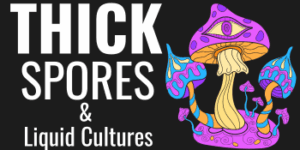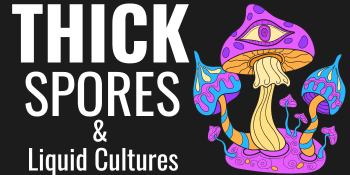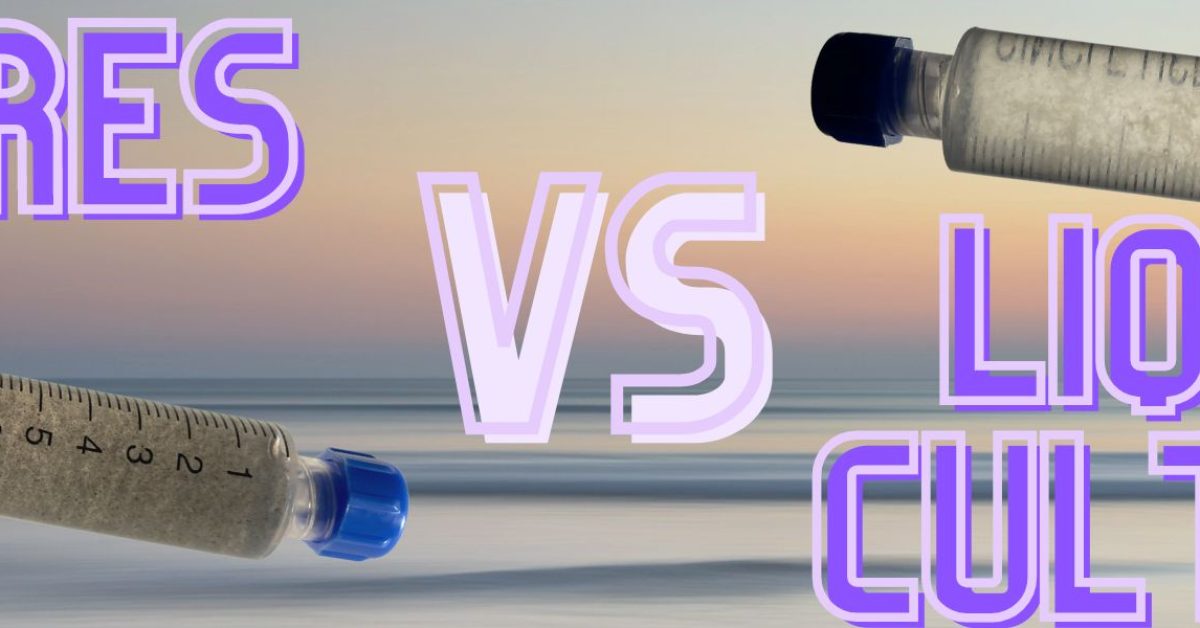Have you ever wondered what the difference is between mushroom spores and liquid culture? It can be a bit confusing for those new to studying mushrooms. However, understanding the differences is essential for any mushroom enthusiast. This article will dive into what makes these two mushroom cultivation methods unique.
What are Mushroom Spores?
Mushroom spores are the reproductive cells of mushrooms, released from mature fruiting bodies. They come in various colors and sizes and can be found on the ground or within mushroom caps. Spores are incredibly small – usually invisible to the naked eye – and must be handled with care since they’re fragile.
Uses of Mushroom Spores
Mushroom spores can be used for several purposes, such as:
- Microscopy research
- Taxonomical identification of mushroom species
- Hobbyist collection
- Making forms of art such as wall hangings or stickers
- Mushroom Cultivation
What is Mushroom Liquid Culture?
Liquid culture, also known as LC for short, comprises living mushroom mycelium and a nutrient broth that keeps the mycelium healthy and growing. Mycelium is the vegetative part of a fungus. Although mycelium breathes oxygen, it can respirate oxygen from the liquid to continue living.
Uses of Mushroom Liquid Culture
- Microscopy research to observe how mycelium behaves under certain conditions
- Identification of any infections spores or mycelium may have.
In addition, liquid culture gives you more control over research since you know precisely how much mycelium is added to each jar. This means that it’s easier to get consistent results compared to using mushroom spores. One of the best strains to start with is Golden Teacher Liquid Culture Syringe
Differences Between Mushroom Spores and Mushroom Liquid Culture
Spores are the fundamental reproductive units of fungi, containing complete genetic information of the species. Each spore holds the full genetic potential, though it typically expresses characteristics similar to its parent organism due to inherited genetic patterns.
From a biological perspective, spores are in a dormant state and represent the most basic form of fungal genetic material. Due to their simple nature, spores are generally more economical for research purposes.
Liquid cultures contain active mycelium in a nutrient medium and command higher prices due to their more developed state. The quality of liquid cultures can vary significantly based on their genetic composition and development.
The most valuable research specimens are those where mycologists have isolated specific genetic traits through careful selection and observation – a process that can exceed a year of documented study. These cultures are particularly valuable for research as they contain predetermined genetic expressions of specific characteristics.
Pros and Cons of Mushroom Spores
Mushroom spores, in the form of a spore syringe or spore print, have been sold online for nearly five decades. It is the original way invented to share or sell mushroom genetics. Spores are time-tested option to acquire new mushroom specimens for cultivation or scientific research.
Pros
One of the key advantages of using mushroom spores is that they are relatively inexpensive compared to other methods. This makes them an attractive option for those on a tight budget. Additionally, spores are readily available from many online retailers and can usually be shipped directly to your door.
Cons
From a research perspective, spores present certain challenges in laboratory settings. The dormant nature of spores means that observing biological activity requires extended observation periods. Additionally, as biological specimens, spores are particularly sensitive to environmental conditions and can be compromised if proper sterile techniques are not maintained.
Pros And Cons of Liquid Culture
Pros:
- Contain active mycelial networks ready for immediate scientific observation
- Allow rapid study of fungal biology and metabolic processes
- Higher success rate in controlled research settings
- Consistent genetic expression for standardized studies
Cons:
- Higher procurement costs due to laboratory production requirements
- Require strict sterile protocols to prevent contamination
- Limited to laboratory-established genetic strains
- More sensitive to environmental fluctuations during transport and storage
- Shorter shelf life compared to spores
In summary, both spore and liquid cultures have pros and cons, which should be carefully weighed against each other when deciding which one suits your needs best.
Frequently Asked Questions
What Is The Shelf Life Of Mushroom Spore Syringes And Liquid Culture Syringes?
Mushroom Spore syringes have a shelf life of one year after the date of manufacture. After one year, the mushroom spores will not germinate and become inert.
Liquid Culture syringes have a shelf life of 3 months after the date of manufacture. The mushroom mycelium may still be alive longer than three months. Still, it will become nutrition starved and stressed, so the mycelium will not thrive in a substrate.
How Much Do Mushroom Spores And Liquid Culture Cost?
Mushroom spores are significantly less expensive than liquid culture. The only time mushroom spores are cheaper than liquid culture is if the culture is not isolated and old. The vendor wants to sell it fast, or it is from an unprofessional source that you can’t trust to provide a quality sample.
Mushroom spore syringes do not require any advanced techniques or broth. It is just a medical syringe filled with an aqueous solution and spores. Liquid culture, however, requires many more steps to make and maintain and a nutrient broth that becomes expensive to make in bulk. Liquid culture also requires refrigeration, so the production cost is significantly higher for the vendor than spores, which is why the retail price to consumers is much higher than spores.
Another factor that affects the cost of mushroom spores and liquid cultures is the amount you purchase. If you buy a larger quantity at once, you may be able to get a discount. But this isn’t always the case – some vendors may offer discounts only for certain strains or quantities.
Are Mushroom Spores And Liquid Culture Safe To Use?
Mushroom spores and liquid cultures are safe to handle and use as long as all safety precautions are followed. It’s essential to wear gloves when handling these items and store them in a dry, cool place.
Are There Any Special Storage Requirements For Mushroom Spores And Liquid Culture?
Mushroom Spore syringes must be kept at a minimum in a cool, dry place away from sunlight. They may be stored in a drawer or shoebox. Liquid culture must be refrigerated to slow the growth of the mycelium and extend its shelf life.
Author Information


